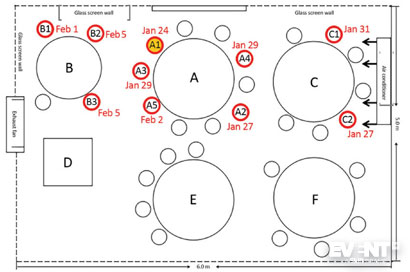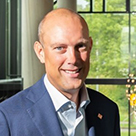Skift Take
One avenue some venues are taking to return to normalcy is to implement social distancing-friendly infrastructure and policies to try to create safety around in-person events. Here's what that may look like and when we might expect the first attempts.
As the peak of coronavirus infections starts to level off in many countries — Italy has finally seen its first drop in its number of active cases — industries that have been most affected by the outbreak and the resulting lockdowns are starting to think practically about how and when they can reopen for business.
The events and hospitality industries are understandably eager to resume organizing in-person gatherings, and some venues are already working hard on making that happen as soon as possible.
Here’s what they’re doing to prepare for events and to start getting the industry back on track.
Restarting Events
Conditions
We recently looked at the conditions that need to be met for events to resume, which in the US, will likely be during phase two of the plan to reopen the country. This will occur following a successful first phase, meaning no evidence of a resurgence once the first restrictions are slowly lifted.
In the US, the lack of consensus even within the same state leaves much to be desired in terms of guidance for venues, and some have taken it upon themselves to publish their own conditions for recovery. The Wynn Las Vegas published a set of steps and criteria for resuming business in their Wynn Las Vegas Health & Sanitation Program. The document emphasizes that, while Nevada is in a relatively strong position for coping with Covid-19 relative to other states, the process must be undertaken incrementally to allow for marginal adjustments to the strategy depending on changing data and circumstances.
The Wynn Las Vegas’ proposed path to recovery begins in early May — subject to a number of health and safety measures and a reduced occupancy rate to start. While the Wynn emphasizes caution, this seems like an ambitious goal for events in the US considering its status as the world leader in coronavirus cases.
The question of when and how events will restart becomes more complex when taking into account the fact that not every country is following the same outbreak timeline or the same protocols for easing lockdowns. While May might seem dubiously early in the US, it represents a more realistic timeline for less hard-hit countries. The initial recovery of events and hospitality in these places could serve as an important and instructive opportunity for the rest of the world to see what works and what doesn’t in a relatively lower-risk litmus test.
Impact and Logistics
We spoke with Mark Struik, Commercial Director of Dutch hotel chain Postillion Hotels, about the toll the current situation has been taking on business as well as the steps the Postillion is taking to begin hosting events again.
The Postillion’s goal is to host the first 1.5 meter social distancing conference to showcase that social distancing events can be done, and that it’s important to prioritize them as soon as governments allow it. When that will be is still very much up in the air. The original date was May 18, but after a recent announcement to extend lockdown measures, the date is yet to be determined.
In the meantime, virtual events have gained traction and are helping to keep the industry afloat while live events are on hold. Even when the first physical events do resume, attendance will be limited and virtual components will be important for keeping events both financially viable and accessible to more delegates.
Cost
If successful, this event could lead to others. However, social distancing will force the Postillion to operate at an estimated 20-40% capacity, and the cost of implementing a socially distant event could be prohibitively expensive. Struik notes that, in order to justify operating at such a low capacity, traditional business models will have to change.
This will be another challenge that venues and organizers face in the return to normalcy, as the industry is experiencing deep financial hardship and virtual events have proven safer and more economical. Devoting any additional budget for a safe venue may not be in the cards for many.
New Venue Safety Measures
What sorts of measures can we expect these venues to take? How effective are they?
At gatherings that are still taking place regardless of the pandemic, such as the White House Coronavirus Task Force press briefings, social distancing measures have been implemented for several weeks now. There are a limited number of reporters allowed to each briefing, and they are required to have their temperature checked before entering the room.
These protocols will likely become commonplace when other events resume and are among the measures being proposed by venues looking to prepare for live events and normal business in the near future. Among these are the Wynn, the Postillion, and also the Four Seasons and Marriott hotel chains.
The Wynn’s Health and Sanitation Program includes a number of steps it plans to take in order to ensure that recovery is undertaken in a safe and responsible way. These include physical distancing measures, spot temperature checks, a cap on gathering size and occupancy in retail and other areas, and mandatory mask wearing. It also indicates separate instructions for different aspects of the hotel’s operations including training for employees, cleaning protocols and access to PPE, and a new flow for processing guests, as well as specific sanitation policies for each staff department.
Venues will have to define safety protocols based largely on their government's guidelines as well as their own judgment as different governments are pushing different recommendations.
For example, the current social distancing guidelines in the US dictate that people should stay at least 6 feet away from each other, while the recommended distance in the UK, Canada and elsewhere is 2 meters (about 6.5 feet). These guidelines are based on the distance virus-carrying droplets are thought to be capable of traveling when someone coughs or sneezes, though further studies have shown that at least 10% of droplets (typically smaller in diameter than those that fall to the ground immediately) travel farther than 2 meters. This is at least in part because droplets can shrink after they leave the body and become aerosols, which are lighter and remain aloft for longer. A case of infection in a Guangzhou restaurant even suggested that “strong airflow from the air conditioner could have propagated droplets” further than they might otherwise have gone.
Professor Lidia Morawska, Director of the International Laboratory for Air Quality and Health at the Queensland University of Technology in Australia, was interviewed by Forbes on the sufficiency of the 2 meter logic. Here is an excerpt:
In the Netherlands, that number is 1.5 meters (about 5 feet), and the Postillion is adopting it as the basis for several social distancing protocols it plans to test at its event, like numbered seats set 1.5 meters apart to avoid attendees shuffling around the room looking for a chair. Other measures including separate entrances assigned to events based on where their meeting rooms are located, spread out parking spots, and sanitizing stations. The provision of masks or gloves could also be introduced — again, based on whether or not the government recommendations catch up to what epidemiological specialists elsewhere are saying in time for the event.
Apart from a seeming lack of consensus informing the recommendations, there is also the question of how to deal with attendees who may not be inclined to follow the rules. Just a few weeks ago, the White House Correspondents’ Association banned a news outlet from the press briefing rotation after a reporter repeatedly violated social distancing protocols. Struik mentions that removing problematic attendees is actually a part of the standard operating procedures for the Postillion hotels already, and that enforcing the rules by removing bad actors during the event is certainly a possibility.
What Might Events Learn from Hospitality?
Marriott Hotels has also begun preparing for restrictive measures in its properties by significantly increasing its cleaning and disinfecting protocols, as well as enabling guests to access many hotel services on their phones to decrease physical touchpoints. It will also be rearranging furniture in common areas to assist with social distancing and will be rethinking F&B for guests and events, such as buffets, to ensure everyone’s safety.
The Four Seasons Hotel in New York has recently been housing healthcare workers and has implemented similar safety measures, with virtual check-ins, a limit of one guest per elevator, and pre-boxed meals. It has also been leaving rooms empty for 2 to 3 days between guests.
Sending a Message to the Industry
While Struik makes it clear that nothing trumps public health and safety, he underlines the Postillion’s goal of setting an example for the industry:
This pandemic has been an ongoing cycle of weighing public health against economic health, and while venues and event organizers are waiting for official guidelines to ease up, getting people together again is a top priority for many and will be worth the potential risks of meeting in the initial post-lockdown stages.
IN CONCLUSION
There are still many unknowns around this virus, and although timelines for recovery are getting more concrete each week, no one knows for sure how things will play out.
The only reasonable way forward for event venues is to start preparing for long-term social distancing and safety measures once live events do resume, and to look to early adopters of these protocols to evaluate their viability and implement successful regulations.






